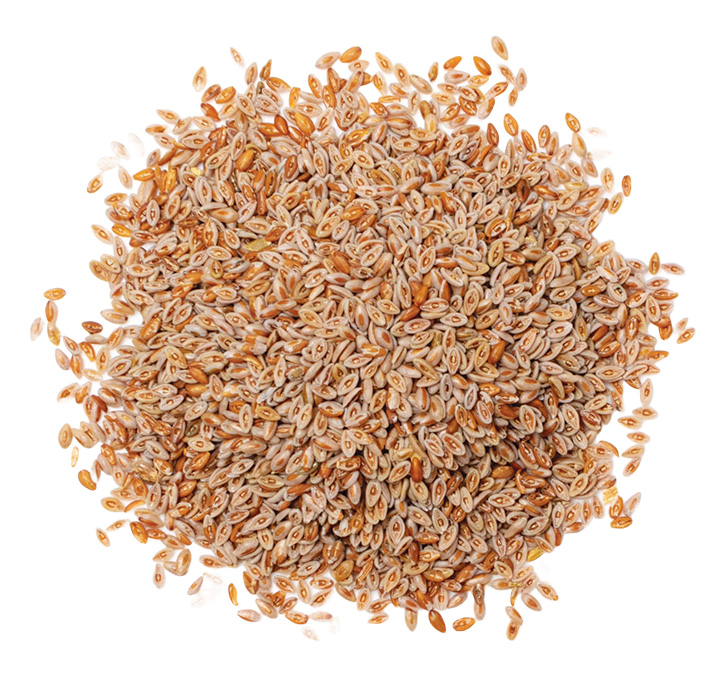Pharmacists encounter pregnant and new mums more often than most health professionals, and can have a bird’s-eye view when things go awry.
At 20 weeks pregnant, PSA’s Queensland Pharmacist of the Year Jacqueline Meyer MPS, was diagnosed with intrauterine growth restriction, which severely impacted her fetal growth.
A few weeks later, she stopped working – effective immediately. ‘I was put on immediate bed rest, even though I felt fine,’ she says.
With her amniotic fluid diminished, Ms Meyer’s daughter, Fallon, was born at 28 weeks. Weighing only 520 grams, Fallon was placed in an incubator in the neonatal intensive care unit where she remained for the next 2 months.
Ms Meyer is one of thousands of women who experience pregnancy complications, including gestational diabetes mellitus (GDM), affecting 1 in 6 pregnant Australian women.1
Perinatal depression (PND) is another prevalent complication, affecting up to 1 in 5 expectant or new mothers.2
However, there are significant gaps in pregnancy and early childhood support
in Australia.
With GDM diagnoses doubled within a decade,3 many patients are forced to rely on group education classes, says Anna Barwick MPS, credentialed pharmacist, and founder of remote access telehealth advisory service PharmOnline. Meanwhile, suicide is the third-highest cause of death among new mothers in Australia.4
After her turbulent pregnancy, Ms Meyer thinks pharmacists can help to fill these gaps.
‘We can recognise red flags, direct patients where to seek help, and
provide emotional support about the importance of looking after your own health and nutrition.’
Medicine use in pregnancy
While ‘every woman’ wants to avoid exposing their unborn child to risks associated with taking medicines for chronic conditions such as epilepsy, inflammatory bowel disease and arthritis, those risks can sometimes be overestimated, says Noor Al-Adhami, Women’s and Newborn Pharmacy Team Leader at Brisbane’s Royal Brisbane and Women’s Hospital (RBWH).
‘A gap we often see in RBWH’s Maternity Outpatient Clinic is lack of discussions around safety of medicines prescribed for depression and anxiety in pregnancy and breastfeeding,’ she says.
‘This can lead to women stopping their medicines abruptly without discussing with their GP or midwife, resulting in a deterioration in mental health that can negatively impact maternal and fetal outcomes.’
Pharmacists are in a good position to provide support and information regarding the safety of medicines in pregnancy and to address any concerns in a non-judgemental manner.
‘Advice regarding safety of antidepressant medicines involves discussing the benefit of continuation/initiation on maternal health, including improved function and quality of life, as well as risk to the fetus, which evidence shows is minimal with appropriate antidepressants,’ says Ms Al-Adhami.
Health monitoring
While pregnancy is a short-term phase of life, significant ongoing effects can be experienced, particularly in children from pregnancies that are not well managed, says Ms Barwick.
‘There are many points, particularly during health crises, where pharmacists can intervene, monitor and provide recommendations.’
Gestational diabetes
When expectant mums are diagnosed with GDM, community pharmacists can walk them through the process of monitoring blood glucose levels (BGLs).
Where insulin is prescribed, pharmacists can inquire whether the dose is controlling blood glucose levels, and check their injection technique, says Ms Meyer.
 The use of insulin, considered a high-risk medication with APINCHs classification,5 Ms Barwick notes, provides justification for a Home Medicines Review (HMR). ‘There’s an advantage to going into the home to observe the patient’s diet, consider potential interactions, and educate patients on the best effects and outcomes,’ she says.
The use of insulin, considered a high-risk medication with APINCHs classification,5 Ms Barwick notes, provides justification for a Home Medicines Review (HMR). ‘There’s an advantage to going into the home to observe the patient’s diet, consider potential interactions, and educate patients on the best effects and outcomes,’ she says.
Advice around cleaning blood glucose level (BGL) monitors to ensure accuracy can also be provided. ‘Pharmacists can explain how to put test drops through and clean blood spills on the monitor, common in pregnancy due to higher blood volume,’ says Ms Barwick.
With only 50% of women diagnosed with GDM receiving tests for heart disease and type 2 diabetes post-pregnancy,6 HMRs can be beneficial at this stage of the journey, too.
‘Along with conversations around diet choices, exercise regimes and sleep, I also explain how often testing is required over the next 5–10 years, and how to monitor for signs of the development of diabetes,’ Ms Barwick advises.
Nausea and vomiting in pregnancy
The presence of iron in pregnancy multivitamins may exacerbate symptoms of nausea and vomiting in some pregnancies, according to Ms Barwick.
‘Pharmacists can recommend a trial cessation of the iron component of pregnancy vitamins, often unnecessary in pregnancy,’ she says.
‘A simple change in vitamin to focus on iodine and folate can make a big difference.’ Ms Barwick says community pharmacists may also recommend over-the-counter medicines such as doxylamine for symptoms of nausea and vomiting in pregnancy (NVP), and monitor its effectiveness.
‘There are many points, particularly during health crises, where pharmacists can intervene, monitor and provide recommendations.’
ANNA BARWICK MPS
When women have symptoms of NVP, Ms Meyer points out that a family member might come into the pharmacy on their behalf if they are severely unwell.
‘Pharmacists can check how the woman is feeling and advise on the red flags that warrant a medical emergency, such as vomiting to the point of severe dehydration, heart palpitations, blurred vision and cramping.’
When ondansetron is prescribed, pharmacists can recommend easy-to-consume forms, such as sublingual wafers, she adds.
Preeclampsia
Pregnant women who present with new hypertension after 20 weeks should be screened for preeclampsia.7
Community and credentialed pharmacists can assist patients with monitoring blood pressure, and look out for signs of preeclampsia, such as sudden oedema and weight gain, says Ms Barwick.
‘Patients can also be taught how to use a home blood pressure monitor appropriately and record the results.
Women at high-risk of developing preeclampsia should consider treatment with low-dose aspirin,8 which can also be used to manage coagulation abnormalities in early pregnancy to prevent miscarriage.
‘A dose of around 75 mg has been shown to be effective for delivering a healthy baby, safely,’ notes Ms Barwick.9 Up to 150 mg can be used to prevent preeclampsia, she adds.10
Pharmacists should also keep a record of pregnant patients using aspirin to monitor for any potential adverse effects, such as bruising or bleeding.
‘While the risk of low-dose, aspirin-associated bleeding is low, reinforce the importance of looking out for any signs, either vaginal or rectal,’ Ms Barwick warns.
Vaccinations
Australia has ‘dismal’ antenatal vaccination rates, with 15% vaccinated against influenza, 27% against pertussis, and only 12% against both among more than 591,000 pregnancies analysed in a population-based linked cohort study of data between 2012–2017.11
COVID-19 vaccine hesitancy has also been detected among pregnant Australian women.12 Overall, there is a lack of understanding of the benefits of antenatal vaccination, including providing immunity to both baby and mother against serious respiratory infections, says Ms Al-Adhami. Reduced access to vaccines is also an issue, particularly among vulnerable populations, such as those with mental health problems, and Aboriginal and Torres Strait Islander peoples.
‘Once we identified some women were having difficulties accessing antenatal vaccinations in the community, we recognised an opportunity to extend our scope of practice and improve our service delivery within the clinic,’ she says.
This included credentialed training and the development of an opportunistic model of care, where ‘at-risk’ women were counselled and offered antenatal vaccinations during clinic visits.
‘Last year 546 vaccines were administered by our specialist antenatal pharmacists, adds Ms Al-Adhami.13
In Ms Meyer’s experience there has also been confusion among women about what vaccines are needed during pregnancy, and where to get them.
‘The states and territories all have different rules and regulations around who can provide National Immunisation Program (NIP) vaccines,’ she says.
With most jurisdictions now increasing the number of vaccines pharmacists can administer, this should be used as an opportunity to initiate conversations with pregnant women about vaccination.
‘Ensure the mother is well educated on what vaccines she, and other family members, should receive according to current guidelines,’ says Ms Meyer.
All about birthing on country Birthing on Country (BOC) is a holistic, integrated and culturally appropriate model of care, aimed at providing the best start in life for Aboriginal and Torres Strait Islander babies and their families.14 Broader than labour and delivery, BOC addresses socio-cultural and spiritual risk not dealt with through mainstream services. Guiding principles for a BOC program include respect for and incorporation of the knowledge and traditional practice of Aboriginal and Torres Strait Islander peoples, incorporate a holistic definition of health, respect for family involvement, women’s business, connection with Country and continuity of culturally safe care.15 Aboriginal and Torres Strait Islander mothers are 3–5 times more likely to die in childbirth than other mothers. Their babies are almost twice as likely to die in the first year of life – often due to premature birth.16 With research revealing access to community-governed, culturally safe birthing services is linked to a reduced risk of premature birth,17 pharmacists can advocate for and support BOC models of care. ‘BOC is so much broader than where a mother births – it is a social justice movement and system-wide reform. It’s an opportunity to Close the Gap in life outcomes for mums and bubs by recognising the impact of colonisation and the benefits of returning childbirth services to Aboriginal and Torres Strait Island community control,’ says Alice Nugent MPS, Aboriginal Community Controlled Health Organisation Pharmacist. Although not available everywhere, BOC can still involve birthing in a local hospital with the presence of an Aboriginal or Torres Strait Islander midwife or support worker throughout a woman’s pregnancy, birthing and post-natal journey. Once the baby is born, ongoing support is usually provided to the family, which may include cultural ceremonies for the mother and newborn. |
Breastfeeding
The World Health Organization recommends babies be exclusively breastfed for the first 6 months of life.18
Yet, in 2020–21, only 35% of infants in Australia were exclusively breastfed at 6 months, according to research published by the Australian Institute of Health and Welfare.19
Breastfeeding support is often hard to come by, with lactation consultant visits not covered under the Medicare Benefits Schedule.20
The most common reason for ceasing breastfeeding prior to 6 months of age is perception of insufficient milk supply.21
‘There’s a lot of noise about tongue tie online at the moment,’ says Ms Meyer. ‘It’s hard to cut through the information relevant to you and to your baby.’
Women concerned whether the baby is getting adequate hydration and nutrition from breastfeeding can be advised on red flag or warning signs to watch for.
This includes sunken eyes, less than six wet nappies per 24 hours, and monitoring the colour of stools to rule out any abnormalities, she says.
‘Pharmacists can
check how the woman is feeling and advise
on the red flags that warrant a medical emergency.’Jacqueline Meyer MPS
Infant formulas
Formula manufacturers commonly use marketing that may feed into parental anxieties in claiming their products can prevent fussiness, help with colic, or improve night-time sleep.22
Pharmacists can emphasise the ‘antibodies, immunoglobulins and health benefits’ that breast milk can provide, along with advice on ensuring milk quality is at optimum levels, says Ms Meyer.
‘The number one thing is to eat before you feed,’ she says. ‘Mothers should also have a wholesome, balanced diet full of fresh nutrients and vegetables, so nutritional intake is at a premium.’
While breastfeeding should be encouraged, pharmacists can also guide mothers around selecting the right formulas when breastfeeding is not possible, says Ms Meyer.
‘We get a lot of questions around milk-free or dairy-free alternatives due to rising concerns of allergies and intolerances,’ she says.
Factors to consider include the baby’s age, digestive issues, peptide profiles, short- or long-chain formula requirements, or whether specific formulas need to be prescribed.
Pharmacists should also enquire how formulas are tolerated over a trial period – which ones and for how long, any reactions such as refusal, any reflux-type symptoms, changes in stool colour, irritability and any difficulty settling, suggests Ms Meyer.
‘Just trialling the formula for one day is often not enough. A longer period of time is required to identify a true intolerance.’
Medicines and breastfeeding
Another reason why mothers opt to stop breastfeeding is medicine use.27 Pharmacists can reassure patients that very small amounts of medicines generally pass through breast milk, says Ms Meyer.
‘Medicine should never be a reason to stop breastfeeding, unless specifically advised to do so.’
Pharmacists can also advise patients when to take their medicines. ‘If the medicine is taken multiple times a day, recommend taking it directly after a breastfeed, so it reaches peak concentration in between feeding cycles,’ she says.
‘If your mum
or dad had perinatal mental ill health, you’re more likely to have mental ill-health issues later on.’Lily Pham MPS
Perinatal depression
While we’ve come a long way in talking about mental health, antenatal and postnatal appointments tend to focus more on the baby than the mother, says PSA NSW Vice President and pharmacy researcher Lily Pham MPS.
However, the repercussions from perinatal depression (PND) and anxiety are enormous, with an accumulated cost to the Australian economy of $7.3 billion.28
PND can impact birth weight and APGAR score.29 The impacts can also extend into adolescence, Ms Pham says.
‘If your mum or dad had perinatal mental ill-health, you’re more likely to
have mental ill health issues later on,’ says Ms Pham.
Pharmacy screening
Early detection of PND and referral to ensure the right support is key. With shortages in primary health workforces, pharmacists are perfectly primed to fill this gap, particularly by initiating conversations with women with whom they have a rapport, says Ms Pham.
The screening process can vary, depending on pharmacy staffing capability and model of care. ‘It can be as simple as embedding the Whooley questions into a conversation,’ Ms Pham points out.30
Where capacity allows, the Edinburgh Postnatal Depression Scale, validated for use in pregnancy and the post-natal period, can also be used.31
While screening is recommended throughout the perinatal period, healthcare professionals usually screen in the first 6 weeks post-birth. However, it is the 1-year mark and beyond where increasing research shows perinatal mental ill health can persist. As other services start to drop off, pharmacists could additionally target screening here.
‘Pharmacists could also ask the parent if they’ve been screened to avoid doubling up,’ says Ms Pham.
What’s ailing pregnant and new mums?
|
References
-
- Australian Institute of Health and Welfare. Diabetes: Australian facts. Gestational diabetes. 2023. At: www.aihw.gov.au/reports/diabetes/diabetes/contents/how-common-is-diabetes/gestational-diabetes
- SANE. Perinatal mental illness. 2018. At: www.sane.org/information-and-resources/facts-and-guides/perinatal-mental-illness
- Australian Institute of Health and Welfare. Diabetes: Australian facts. 2023. At: www.aihw.gov.au/reports/diabetes/diabetes/contents/how-common-is-diabetes/gestational-diabetes
- Australian Institute of Health and Welfare. 2023. Australia’s mothers and babies: Maternal deaths. At: www.aihw.gov.au/reports/mothers-babies/maternal-deaths-australia#cause
- Australian Commission on Safety and Quality in Health Care. APINCHS classification of high risk medicines. 2023. At: www.safetyandquality.gov.au/our-work/medication-safety/high-risk-medicines/apinchs-classification-high-risk-medicines
- Marschner S, Wah Cheung N, Wing‐Lun E, et al. Primary care management post gestational diabetes in Australia. Intern Med J 2024; 54(1):164–71.
- Society of Obstetric Medicine of Australia and New Zealand. Guideline for the management of hypertensive disorders of pregnancy. 2014. At: https://ranzcog.edu.au/wp-content/uploads/2022/05/Guideline-for-the-Management-of-Hypertensive-Disorders-of-Pregnancy.pdf
- Department of Health. Risk of pre-eclampsia. 2018. At: www.health.gov.au/resources/pregnancy-care-guidelines/part-d-clinical-assessments/risk-of-pre-eclampsia
- McHugh L, Van Buynder P, Sarna M, et al. Timing and temporal trends of influenza and pertussis vaccinations during pregnancy in three Australian jurisdictions: the Links2HealthierBubs population-based linked cohort study, 2012–2017. Aust N Z J Obstet Gynaecol 2022;63(1)27–33. At: https://obgyn.onlinelibrary.wiley.com/doi/10.1111/ajo.13548
- Rikard‐Bell M, Elhindi J, Lam J, et al. COVID‐19 vaccine acceptance among pregnant women and the reasons for hesitancy: a multi‐centre cross‐sectional survey. Australia and New Zealand J Obstet Gynaecol 2023;63(3):335–43.
- World Health Organization. Infant and young child feeding. 2023. At: www.who.int/news-room/fact-sheets/detail/infant-and-young-child-feeding
- Australian Institute of Health and Welfare. Australia’s mothers and babies: Breastfeeding. 2023. At: www.aihw.gov.au/reports/mothers-babies/breastfeeding-practices
- Department of Health and Aged Care. Medicare Benefits Schedule – Note MN.13.18. At: www9.health.gov.au/mbs/fullDisplay.cfm?type=note&qt=NoteID&q=MN.13.18
- Reynolds R, Kingsland M, Daly J, et al. Breastfeeding practices and associations with pregnancy, maternal and infant characteristics in Australia: a cross-sectional study. Int Breastfeed J2023;18(8). Epub 2023 January 19.
- World Health Organisation. Experts call for clampdowns on exploitative formula milk marketing in new Lancet series. 2023. At: www.who.int/news/item/08-02-2023-experts-call-for-clampdowns-on-exploitative-formula-milk-marketing-in-new-lancet-series
- Healthy WA. Medications and breastfeeding. 2021. At: www.healthywa.wa.gov.au/Articles/J_M/Medications-and-breastfeeding
- PWC Consulting Australia. The cost of perinatal depression and anxiety in Australia. 2019. At: www.pc.gov.au/__data/assets/pdf_file/0017/250811/sub752-mental-health-attachment.pdf
- Navaratne P, Foo XY, Kumar S. Impact of a high Edinburgh Postnatal Depression Scale score on obstetric and perinatal outcomes. Sci Rep 2016;6:33544. At: www.ncbi.nlm.nih.gov/pmc/articles/PMC5034257/
- University of California San Francisco. Whooley Questions. 2024. At: https://whooleyquestions.ucsf.edu
- Kheirabadi GR, Maracy MR, Akbaripour S, et al. Psychometric Properties and Diagnostic Accuracy of the Edinburgh Postnatal Depression Scale in a Sample of Iranian Women. Iran J Med Sci 2012;37(1):32–8.



 Pharmacists have always prescribed, but they have the potential to prescribe much more
Pharmacists have always prescribed, but they have the potential to prescribe much more



 Sponsorship information
Sponsorship information


 Talking to patients who have questions
Talking to patients who have questions






